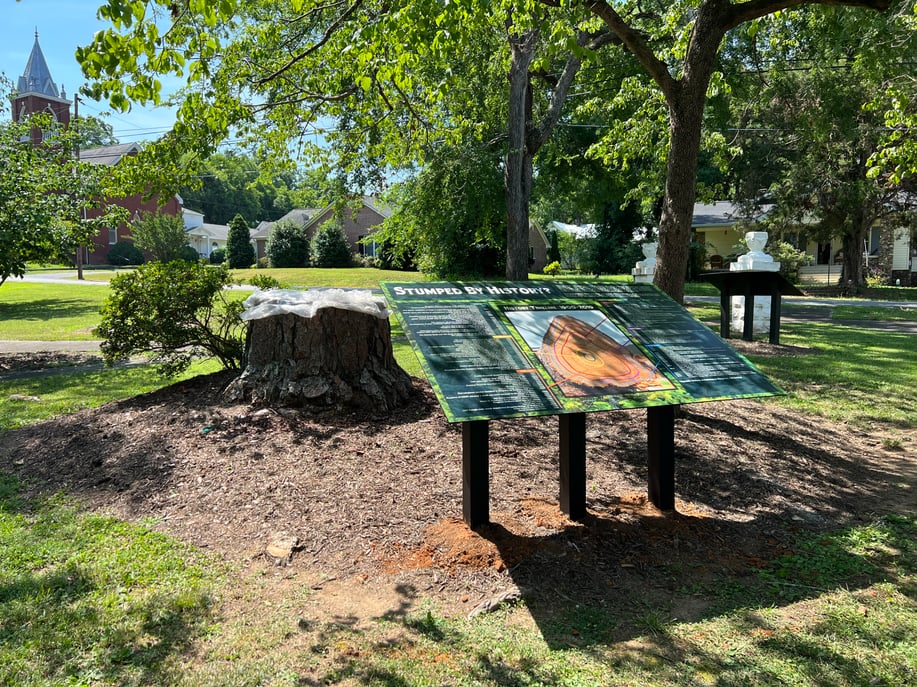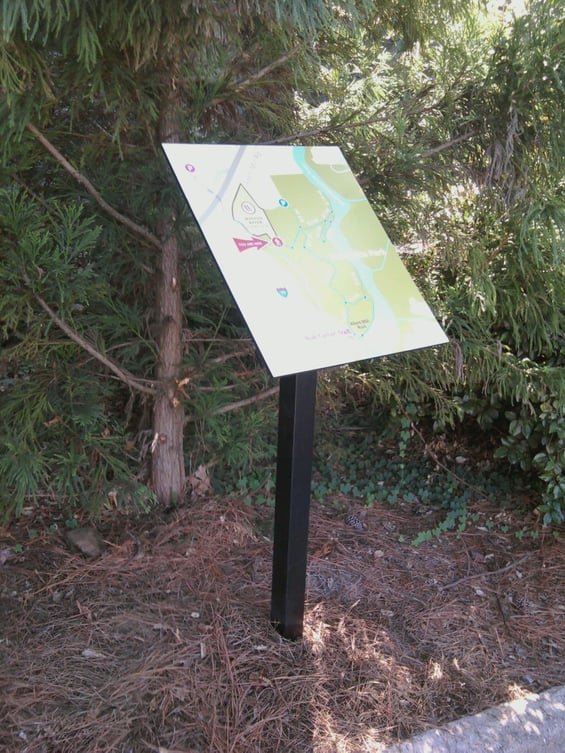Interpretive/Informational Signs
Unveiling the Power of Interpretive Signs: A Deep Dive into Their Advantages and ApplicationsInterpretive (Informational or Educational) Signs are more than just pieces of metal or plastic with text. They are silent storytellers, educators at your fingertips, and windows into new worlds. Beyond simply providing information, they spark curiosity, deepen understanding, and enrich experiences for a diverse range of audiences. This comprehensive guide delves into the multifaceted advantages of interpretive signs and explores their applications across various settings.
The Allure of Self-Sufficiency: 24/7 Interpretation at Your ServiceOne of the most significant advantages of interpretive signs is their self-sufficiency. Unlike guided tours or staffed exhibits, they offer information 24 hours a day, 7 days a week. This empowers visitors to explore at their own pace, delve deeper into topics that pique their interest, and revisit information for a more comprehensive understanding. This independence fosters a sense of ownership over the learning experience, making it engaging and memorable. Imagine a tourist visiting a historic battlefield. Traditional tours might be limited by time and schedule. With well-placed interpretive signs, the tourist can wander the grounds at their leisure, reading about key events, troop movements, and the significance of specific landmarks. This allows them to connect with the history on a personal level, linger on details that resonate, and develop a more profound understanding of the past.
Beyond Text: A Multifaceted Approach to CommunicationInterpretive signs go beyond the limitations of text alone. By incorporating a variety of communication styles, they cater to different learning preferences and enhance comprehension. Here are some powerful tools employed in interpretive signage:
This multi-faceted approach ensures that visitors of all ages and backgrounds can grasp the information effectively. A child might be captivated by a colorful illustration depicting historical figures, while an adult might delve deeper into a detailed diagram explaining a scientific principle. A Tailored Message for Every AudienceThe beauty of interpretive signs lies in their versatility. They can be customized to cater to a wide range of audiences with distinct needs and interests. Here are some prominent examples: Tourists at Historical Sites: Interpretive signs at historical landmarks can bring the past to life by highlighting significant events, architectural features, and the lives of people who shaped the location. This allows visitors to understand the history behind the walls and appreciate the cultural significance of the site.
Visitors to a Manufacturing Plant: Interpretive signs can transform a manufacturing plant tour into an engaging learning experience. Diagrams depicting production processes, explanations of different manufacturing stages, and information on the materials used can foster a deeper understanding of how products are created.
School Children on a Field Trip: Interpretive signs at museums, nature centers, or educational institutions can enhance the learning experience of school children. Engaging narratives, interactive elements, and age-appropriate information can transform a field trip from a passive observation to an active exploration.
Employees in a Workplace: Interpretive signs can be used within companies to communicate safety protocols, company policies, emergency procedures, or manufacturing processes. This ensures crucial information is readily accessible to all employees, fostering a safe and well-informed work environment. Conservation Efforts in National Parks: Interpretive signs play a vital role in environmental education. They can educate visitors about the local flora and fauna, highlight conservation efforts, and encourage responsible behavior within parks and natural areas.
Art Galleries and Museums: Interpretive signs at art installations or museum exhibits can offer deeper insights into the artwork, its context, the artist's inspiration, and the techniques used. This empowers viewers to develop a greater appreciation for the art itself.
The possibilities for these informational or educational signs are truly endless. Interpretive signs can be adapted to any setting, audience, and purpose, offering a customized learning experience. The Lasting Impact: Fostering Deeper Understanding and AppreciationInterpretive signs are not just passive displays of information; they are catalysts for deeper understanding and appreciation. Here's how they achieve this lasting impact: Sparking Curiosity: Engaging narratives, well-chosen visuals, and interactive elements can spark curiosity in viewers, encouraging them to explore a topic further. This curiosity can lead to independent research, discussions, and a lifelong love of learning. Building Connections: Interpretive signs can provide context and historical background, allowing visitors to connect with the subject matter on a deeper level. This can foster a sense of place, a deeper appreciation for cultural heritage, and a greater understanding of the world around us. Inspiring Action: Interpretive signs can be used to raise awareness about environmental issues, promote sustainable practices, or encourage responsible behavior. For example, signs in a national park might educate visitors about the importance of preserving wildlife habitats, while signs in a museum might encourage visitors to support conservation efforts. Creating Shared Experiences: Interpretive signs can serve as a common ground for shared experiences. Families can read and discuss the information together, creating lasting memories and fostering a love of learning.
Empowering Independent Learning: By providing accessible and engaging information, interpretive signs empower visitors to learn at their own pace. This fosters a sense of autonomy and encourages lifelong learning.
Preserving Knowledge: Interpretive signs can serve as valuable historical records, preserving knowledge and cultural heritage for future generations. They can document local history, traditional practices, and the stories of the people who shaped a community. In conclusion, interpretive signs are powerful tools for communication, education, and engagement. Their ability to provide information 24/7, cater to diverse learning styles, and spark curiosity makes them invaluable assets in a wide range of settings. From historical landmarks and museums to nature centers and workplaces, interpretive signs enhance the visitor experience, foster deeper understanding, and leave a lasting impact on individuals and communities. By investing in well-designed and informative interpretive signs, organizations can effectively communicate their messages, engage their audiences, and create more meaningful and enriching experiences for everyone. Contact Signs and More today and take advantage of our expertise in designing, manufacturing and installing your new Interpretive Signs - customerservice@signsmoreinc.com or 770-383-8808. |
Church Vision/Mission Informational Signs with Examples

Apartment Community Map Informational Sign

United States Navy Chain of Command Informational Sign

Church Mission Informational Sign with Examples





















.png?width=117&height=117&name=2024%20Digital%20Decal%20(1).png)